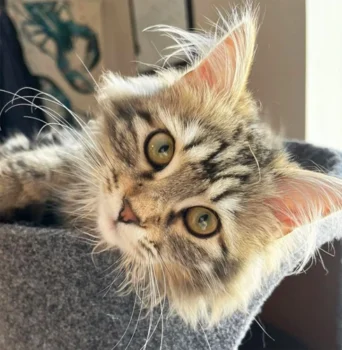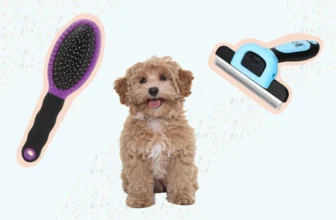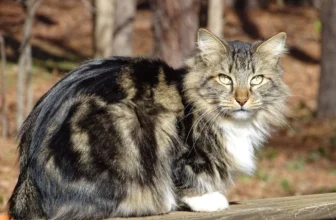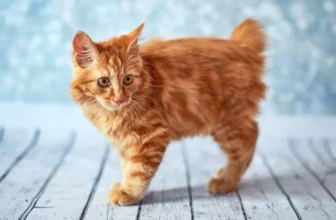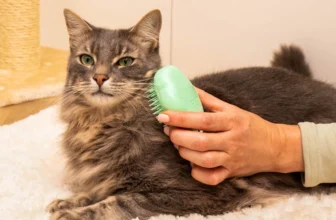As a feline lover and owner of an American Bobtail, you may be perplexed by the shedding of your furry friend. Shedding is a natural process for cats, and while it’s normal for them to lose some fur, excessive shedding can be a concern. You may be wondering how you can help your American Bobtail reduce shedding and improve their coat health. In this article, we’ll explore the role of diet in shedding patterns and how you can improve your cat’s coat through proper nutrition. We’ll also discuss grooming techniques and environmental factors that can affect shedding in American Bobtails. So, let’s dive in and learn how to keep your feline friend healthy and happy!
Why Shedding Occurs and How It Can Affect American Bobtails
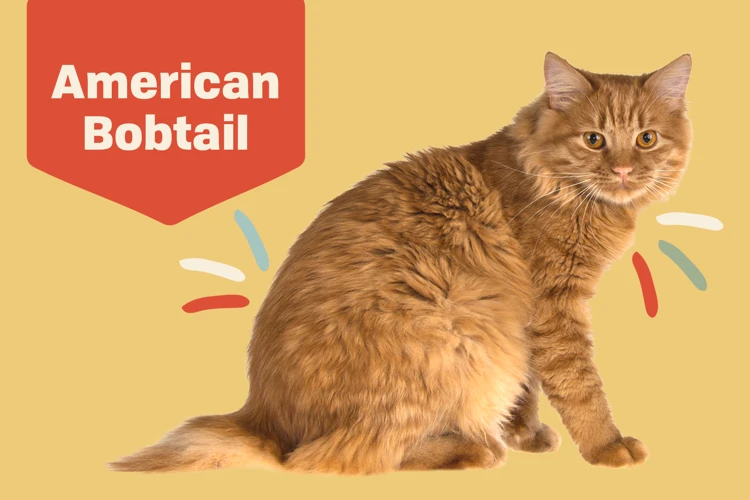
As a pet owner, you may have noticed that your American Bobtail is shedding more than usual. Shedding is a natural process that all cats go through, but excessive shedding can be a cause for concern. In this section, we will explore the reasons behind shedding and how it can affect American Bobtails. Shedding is influenced by various factors such as genetics, nutrition, and environmental factors, and it can cause discomfort to your feline friend. It is essential to understand the causes and effects of shedding to ensure that your American Bobtail remains healthy and comfortable.
Factors That Contribute to Shedding
One of the factors that contribute to shedding in American Bobtails is their genetics. The breed is known for having a thick, dense coat, which can make shedding more noticeable. Additionally, the climate can also play a factor. Cats living in warmer climates may shed more frequently than those living in cooler climates.
Diet is another important factor that affects shedding in cats. Poor nutrition can lead to dry, flaky skin and a dull coat, which can increase the amount of shedding. Cats that are not getting enough nutrients in their diet may also develop skin irritations or allergies, which can cause excessive shedding. On the other hand, a healthy and balanced diet can help keep a cat’s skin and coat healthy, and reduce the amount of shedding.
Stress can also be a contributing factor to shedding in cats. When a cat is stressed, such as when they are introduced to a new environment or there are changes in their routine, it can cause excessive shedding. This is because stress can disrupt a cat’s hormonal balance, which can affect their skin and coat.
It’s important to note that there are some shedding myths out there, such as the idea that shaving a cat can reduce shedding. In reality, shaving a cat can actually do more harm than good, as it can lead to skin irritation and the destruction of the hair follicle, which can cause the hair to grow back even thicker.
Understanding the factors that contribute to shedding is important for American Bobtail owners in order to take steps to manage it. By providing a healthy diet, reducing stress, and using the best grooming tools, shedding can be reduced in American Bobtails. To learn more about managing shedding in American Bobtails, check out our article on tips to reduce shedding in American Bobtail cats.
Why Shedding is a Concern for American Bobtail Owners
Shedding is a natural part of a cat’s life cycle, but it can be a concern for American Bobtail owners. This is particularly true for those with allergies or respiratory problems, as shedding can exacerbate these conditions. Excessive shedding can lead to a messy home, with loose fur accumulating on furniture, carpets, and clothing.
Beyond the aesthetic concerns, shedding can also be a sign of an underlying health issue. For example, cats with skin infections or allergies may experience more shedding than usual. On the other hand, cats with a poor diet or vitamin deficiencies may also shed excessively. Identifying and addressing these underlying issues is crucial for maintaining your American Bobtail’s overall health and wellbeing.
Shedding can also contribute to the formation of hairballs, which can cause digestive issues in cats. It is important for American Bobtail owners to monitor their pet’s shedding behavior and grooming habits to prevent the accumulation of hairballs. This can be achieved through regular grooming and use of appropriate tools such as the Furminator or regular brush.
While shedding is a natural and unavoidable phenomenon, it is important for American Bobtail owners to take steps to manage it. By providing proper nutrition, grooming, and environmental conditions, owners can help minimize the negative effects of shedding on their cat’s health and home. However, if shedding is excessive or accompanied by other concerning symptoms, it is recommended to consult with a veterinarian to rule out any underlying health issues.
Internal Link: Understanding the Biology of Shedding in American Bobtails
The Role of Diet in a Cat’s Shedding Pattern
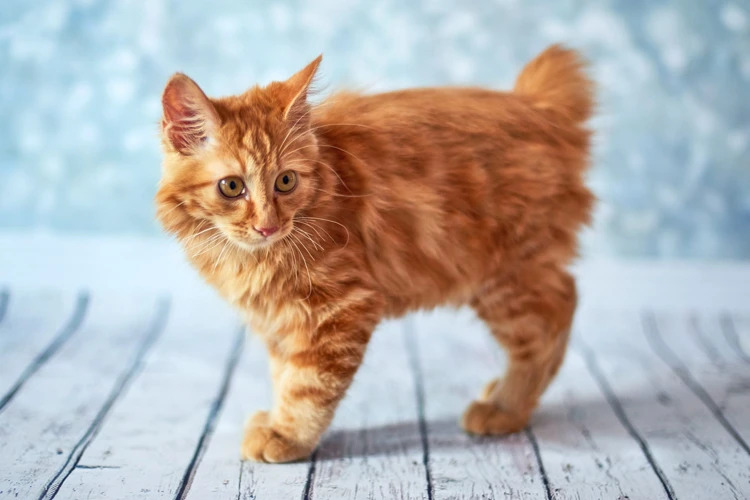
Keeping your American Bobtail’s coat healthy and shiny is important not only for their appearance but also for their overall health. Shedding can be a concern for cat owners, but did you know that the type of food your cat eats can play a significant role in their shedding pattern? In this section, we’ll explore the link between diet and shedding in American Bobtails, and how you can improve your cat’s coat through nutrition. Plus, we’ll provide some additional tips on managing their shedding. So, let’s dive in and discover how the right diet can make a difference for your American Bobtail’s shedding!
The Link Between Nutrition and Skin Health
Nutrition plays a crucial role in maintaining a cat’s skin health, and hence its coat. A well-balanced diet with proper nutrients can go a long way in minimizing shedding and keeping the coat shiny and healthy.
A cat’s skin and coat are made up of protein, which makes it imperative to provide them with adequate amounts of protein in their diet. Protein is a building block of skin and hair, and it helps in maintaining a healthy coat.Grooming and diet go hand in hand in achieving a shiny and healthy coat for your American Bobtail.
Fatty acids are another essential nutrient for maintaining a healthy coat. Omega-3 and Omega-6 fatty acids are particularly important, and they help reduce inflammation, regulate the immune system, and promote healthy skin and coat. A diet rich in fatty acids can help reduce shedding and prevent dry, flaky, and itchy skin on your American Bobtail.
Proper hydration is also crucial for maintaining healthy skin in cats. Without enough water, cats can become dehydrated, leading to dry skin and coat. Hence it is important to ensure that your cat has access to fresh and clean water at all times.
Additionally, vitamins and minerals play a critical role in maintaining healthy skin and coat in cats. Vitamins A, B, C, D, and E; as well as minerals like zinc and selenium, are all essential to support skin health. These nutrients help in collagen production, fighting free radicals, and overall skin integrity.
Here is a table that summarizes the link between nutrition and skin health in cats:
| Nutrient Type | Benefits | Sources |
|---|---|---|
| Protein | Helps maintain a healthy coat, as it is a building block of skin and hair | Meat (chicken, turkey, beef, lamb), fish, eggs |
| Fatty Acids (Omega-3 and Omega-6) | Reduce shedding, prevent dry and itchy skin | Fish (salmon, tuna), flaxseed, canola oil |
| Vitamin A | Essential for skin repair and maintenance | Pumpkin, sweet potato, liver |
| Vitamin D | Helps in the absorption of calcium and promotes healthy skin and coat | Fish liver oils, eggs, fortified foods |
| Vitamin E | Powerful antioxidant that supports skin health and prevents damage from free radicals | Almonds, sunflower seeds, spinach |
| Zinc | Helps with skin repair and maintenance | Poultry, beef, oysters, pumpkin seeds |
| Selenium | Helps prevent damage to skin cells and supports skin health | Brazil nuts, tuna, turkey, chicken |
Providing your American Bobtail with a balanced diet that includes adequate protein, fatty acids, vitamins, and minerals is critical to maintain a healthy coat and reduce shedding. Incorporating the right nutrients into your cat’s diet can help minimize shedding and keep your furry friend’s coat shiny, healthy, and looking its best.
The Importance of Protein and Fatty Acids in a Cat’s Diet
Protein and fatty acids are essential for maintaining a healthy coat in American Bobtails. Protein is the building block of fur, so it’s vital to ensure your cat is consuming enough. Diets lacking in protein can lead to a dull, thin, and unhealthy coat for your pet. This means that protein is an important element of a cat’s food that can impact their shedding patterns.
Fatty acids, specifically omega-3 and omega-6, play a significant role in skin and coat health for American Bobtails. They help to keep the skin hydrated, reduce inflammation, and promote a shiny and healthy coat. Omega-3 fatty acids are known to help prevent shedding and promote healthy skin, while omega-6 helps to keep the coat shiny and healthy.
It’s essential to look for a high-quality cat food that contains both protein and fatty acids, with the optimum ratio of omega-3 to omega-6. Look for a label on pet food with “complete and balanced” to provide quality proteins to ensure that you’re feeding your American Bobtail a diet that supports their coat health.
Some high-protein sources include chicken, turkey, beef, and fish. Sources of omega-3 fatty acids include fish oil, flaxseed, and chia seeds. Omega-6 fatty acids can be found in vegetable oils such as safflower and sunflower oil.
However, it’s important to note that too much protein can lead to high-calorie intake, which can then lead to obesity, making it imperative to pay attention to the amount of food being given to American Bobtails. It is best to find the perfect brush and technique to reduce shedding appropriately without overfeeding your pet.
Ensuring that your American Bobtail’s diet includes adequate protein and fatty acids can significantly impact their coat health and shedding patterns. With this knowledge, you can make informed decisions about your pet’s nutritional needs and choose the right food to keep your American Bobtail’s coat looking and feeling healthy.
The Role of Vitamins and Minerals
Vitamins and minerals play a crucial role in the overall health and well-being of American Bobtails. In particular, certain vitamins and minerals have been shown to have a significant impact on a cat’s shedding pattern. Here are some of the key vitamins and minerals to keep in mind when maintaining your cat’s coat:
| Vitamin/Mineral | Role in Coat Health | Sources |
|---|---|---|
| Vitamin A | Essential for maintaining healthy skin and promoting hair growth | Beef liver, fish oil, sweet potatoes |
| Vitamin E | Helps to nourish and protect the skin | Nuts, seeds, spinach, broccoli |
| Biotin | Supports healthy skin and a shiny coat | Egg yolks, liver, salmon, avocado |
| Zinc | Important for skin integrity and hair thickness | Beef, lamb, pumpkin seeds, cashews |
While these are some of the most important vitamins and minerals for coat health, it’s important to remember that a balanced diet is necessary for overall health. In addition to incorporating these vitamins and minerals into your cat’s diet, make sure your cat is getting a well-rounded mix of other nutrients as well.
It’s also worth noting that while supplements can be helpful in some cases, it’s usually best to get these vitamins and minerals from whole foods whenever possible. This allows your cat’s body to more easily absorb and utilize them.
Remember, a healthy diet is just one piece of the puzzle when it comes to managing shedding in American Bobtails. For more information on shedding myths and whether stress can contribute to shedding, check out our articles on shedding myths and stress and shedding in American Bobtails.
How to Improve Your American Bobtail’s Coat Through Diet
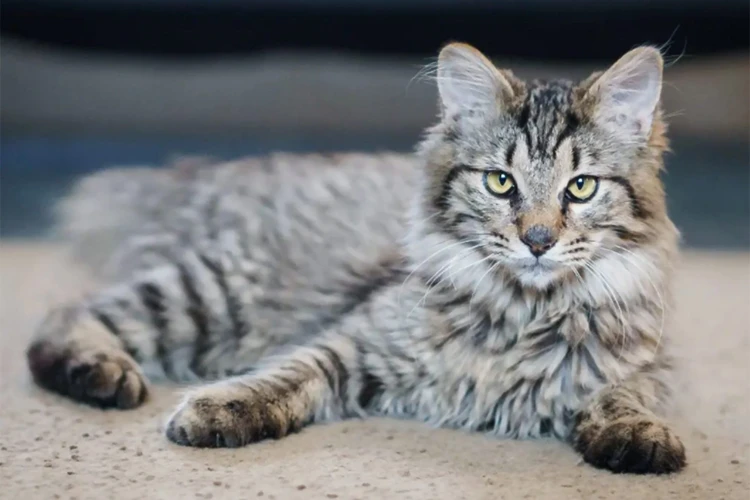
As a pet owner, you want your American Bobtail to have a shiny and healthy coat. One way to achieve this is through proper nutrition. A balanced and nutritious diet not only promotes overall health, but can also improve your cat’s coat quality and reduce shedding. But with the countless options available on the market, it can be overwhelming to decipher which food is best for your cat. In this section, we will explore the role of diet in a cat’s shedding pattern and provide tips on how to improve your American Bobtail’s coat through diet.
Choosing the Right Type of Food
When it comes to choosing the right type of food for your American Bobtail, it’s essential to consider the ingredients and nutritional content carefully. Ideally, you want to select a diet that contains high-quality protein, healthy fats, and a balance of vitamins and minerals. Let’s break down these components further in the table below:
| Nutrients | Importance | Sources |
|---|---|---|
| Protein | Essential for building strong muscles and promoting healthy skin and coat. | Meat, poultry, fish, and high-quality protein sources like eggs and organ meats. |
| Fats | Provide energy and help maintain healthy skin and coat. | Healthy sources like salmon oil, flaxseed, and chicken fat. |
| Vitamins and minerals | Play critical roles in supporting overall health and wellness. | Essential vitamins and minerals like vitamin E, vitamin A, and zinc can be found in many high-quality pet foods. |
It’s essential to look for foods that list high-quality protein sources as their first ingredients, as well as healthy fats and a well-balanced blend of vitamins and minerals. This will help ensure your American Bobtail is getting the nutrients they need to maintain a healthy coat and manage shedding.
In addition to considering the ingredients in your cat’s food, it’s also important to pay attention to the type of food you are feeding them. Wet, canned foods have higher moisture content and may be more beneficial for cats who don’t drink enough water, while dry foods can help promote dental health. Ultimately, the best type of food for your American Bobtail will depend on their individual needs and preferences, so it may be helpful to consult with a veterinarian or animal nutritionist for personalized recommendations. Remember, choosing the right food for your American Bobtail can make a significant difference in their shedding patterns and overall health and well-being.
How to Read Ingredient Labels
When choosing the right food for your American Bobtail, it’s essential to read and understand the ingredient labels. Many commercial cat foods contain fillers and artificial ingredients that may not provide your cat with the essential nutrients they need.
Here’s a breakdown of what you should look for when reading ingredient labels:
| Ingredient | Description |
|---|---|
| Protein | Look for high-quality sources of protein, such as chicken, turkey, or fish. Avoid foods that list “meat” or “animal by-products” as the primary source of protein. |
| Carbohydrates | Choose foods with healthy sources of carbohydrates, such as brown rice, peas, or sweet potatoes. Avoid foods that contain high levels of grains, such as corn or wheat, as they may lead to allergies or digestive issues. |
| Fatty Acids | Look for foods that contain omega-3 and omega-6 fatty acids, which can help improve your cat’s skin and coat health. Sources such as flaxseed and fish oil are beneficial. |
| Preservatives and Additives | Avoid foods that contain artificial preservatives, colors, or flavors. Opt for natural sources of vitamins and minerals, such as fruits and vegetables. |
By focusing on these key ingredients, you can make sure that your American Bobtail’s diet is healthy and well-balanced. Reading ingredient labels is an essential step in providing your cat with the best food possible.
Introducing New Foods to Your Cat’s Diet
When introducing new foods to your American Bobtail’s diet to help manage shedding, there are a few important things to keep in mind.
- Start Slowly: A sudden change in diet can upset your cat’s digestive system, causing vomiting and diarrhea as well as disrupting their shedding pattern. Introduce new foods gradually, mixing them with their current food, and gradually increasing the amount until they are fully transitioned.
- Look for High-Quality Ingredients: High-quality ingredients are key to maintaining your cat’s health and coat, so always opt for foods that contain high-quality animal protein and fatty acids. Avoid foods with fillers and additives that can cause digestive issues and inflammation.
- Consider Food Allergies: Some cats may have food allergies that can affect their shedding pattern. If you suspect your cat has a food allergy, consider conducting an elimination diet to pinpoint the problematic ingredient(s).
- Consult a Vet: If you are unsure of what type of food to choose, consult your veterinarian. They can help you choose a food that is right for your cat’s specific health needs.
By following these tips, you can ensure that your American Bobtail is getting the nutrition they need, while also managing their shedding pattern effectively.
The Benefits of Supplements
Supplements can be a great addition to your American Bobtail’s diet to help improve their coat and reduce shedding. It’s important to remember that supplements should not replace a balanced diet, but rather enhance it. Here are some of the top supplements that can benefit your cat’s skin and coat:
| Supplement | Benefits |
|---|---|
| Omega-3 Fatty Acids | Help reduce shedding, improve coat texture and shine, and promote healthy skin. |
| Biotin | Assists in the production of keratin, which is essential for healthy hair and nails. |
| Zinc | Important in maintaining skin health and helps prevent infections. |
| Vitamin E | Can help reduce inflammation and irritation of the skin, and promote the growth of healthy hair. |
| Probiotics | Can help promote a healthy digestive system, which is important for overall health and absorption of nutrients. |
When choosing supplements, be sure to select ones that are specifically formulated for cats and follow the recommended dosage on the label. It’s important not to over-supplement your cat, as this can lead to adverse effects. Consult with your veterinarian before introducing any new supplements to your cat’s diet to ensure that they are safe and appropriate. With the right combination of diet and supplements, you can help your American Bobtail achieve a healthy, shiny coat and reduce shedding.
Other Ways to Manage Shedding in American Bobtails
As an American Bobtail owner, dealing with shedding can be a frustrating aspect of pet ownership. While monitoring your cat’s diet can help reduce shedding, there are additional methods you can utilize. Here are some alternative ways to manage shedding in your American Bobtail. By incorporating these techniques into your daily routine, you can minimize shedding and keep your cat’s beautiful coat looking healthy and shiny.
Grooming and Brushing Techniques
Maintaining a proper grooming routine for your American Bobtail is crucial for reducing shedding. Regularly brushing your cat’s coat will help remove any loose or dead hair, preventing it from spreading around your home. It also promotes healthy skin and fur by distributing natural oils throughout the coat.
Here are some grooming and brushing techniques that can help minimize shedding in your American Bobtail:
| Technique | Description/Steps |
|---|---|
| Start with a Comb | Use a wide-toothed comb to gently remove any tangles or mats in your cat’s coat before brushing. |
| Use a Shedding Blade | A shedding blade is a metal comb with small teeth that efficiently remove any loose hair from your cat’s coat. Use it gently and with care, as it may irritate your cat’s skin if used too aggressively. |
| Choose the Right Brush | The type of brush you use depends on the length and texture of your cat’s coat. For American Bobtails, a bristle brush or slicker brush works best. |
| Brush in the Direction of Hair Growth | Start at your cat’s head and brush in the direction of the hair growth, working your way down towards the tail. |
| Avoid Sensitive Areas | Avoid brushing sensitive areas such as the face or belly, as this may cause discomfort or pain for your cat. |
| Finish with a Soft Brush | Use a soft brush to gently sweep over your cat’s coat, removing any leftover loose hair and giving it a smooth finish. |
Remember to be gentle and patient when grooming your American Bobtail, as this can be an enjoyable bonding experience for both you and your cat.
In addition to regular brushing, giving your cat a bath every few months can also help reduce shedding. Use a shampoo specifically designed for cats, and make sure to rinse thoroughly to prevent any residue from irritating their skin.
By incorporating these grooming techniques into your routine, you can effectively manage shedding in your American Bobtail and maintain a healthy, shiny coat.
Environmental Factors That Affect Shedding
There are several environmental factors that can affect the shedding of American Bobtails. Here are some things to consider:
- Humidity: The humidity level in your home can play a role in your cat’s shedding pattern. If the air is too dry, your cat’s skin may become dry and itchy, which can cause excessive shedding. Consider using a humidifier to add moisture to the air.
- Temperature: Extreme temperatures, either too hot or too cold, can also contribute to shedding. Make sure to keep your home at a comfortable temperature for your cat.
- Season: Cats tend to shed more during certain times of the year. In the spring and fall, cats may shed their winter or summer coats respectively. Pay attention to your cat’s shedding patterns and adjust their diet and grooming routine accordingly.
- Stress: Just like humans, cats can experience stress, which can lead to excessive shedding. If your cat is stressed, try to identify the cause and reduce their exposure to it as much as possible.
- Other pets: If you have other pets in your home, their shedding can also impact your American Bobtail’s shedding pattern. Make sure to groom and clean up after all pets regularly.
By taking these environmental factors into consideration, you can ensure that you’re doing everything possible to manage your American Bobtail’s shedding and keep their coat healthy and shiny.
Conclusion
After examining the various factors that contribute to shedding in American Bobtails and how diet can play a significant role in a cat’s shedding pattern, it is clear that taking a proactive approach to nutrition can greatly improve the health of your cat’s coat. Ensuring your American Bobtail receives adequate protein and fatty acids, as well as vitamins and minerals, is essential for maintaining healthy skin and reducing excessive shedding.
Additionally, choosing the right type of food and reading ingredient labels can help you make informed decisions when it comes to your cat’s diet. Introducing new foods and supplements can provide further benefits in improving your cat’s coat health. However, it is important to note that you should always consult with your veterinarian before making any dietary changes or introducing new supplements to your cat’s diet.
While diet plays an important role in managing shedding, there are other factors to consider such as grooming techniques and environmental factors. Regular brushing and grooming can help remove excess fur and prevent matting, while environmental factors such as humidity and temperature can affect shedding patterns.
In conclusion, by making conscious decisions about your American Bobtail’s diet and considering other factors that affect shedding, you can help manage shedding and improve the health of your cat’s coat. As with any aspect of cat care, consult with your veterinarian for personalized recommendations and guidance on how to best care for your American Bobtail’s individual needs.
Frequently Asked Questions
1. What causes American Bobtails to shed?
Shedding in American Bobtails is a normal process that occurs due to seasonal changes, hormonal fluctuations, and genetics.
2. Can diet affect my American Bobtail’s shedding?
Yes, diet plays a crucial role in a cat’s shedding pattern. Feeding your American Bobtail a healthy and balanced diet can help improve the condition of their coat and reduce excess shedding.
3. What nutrients should I look for in my American Bobtail’s food to help reduce shedding?
Protein, fatty acids, vitamins, and minerals are all important nutrients that can help improve your American Bobtail’s coat and reduce shedding.
4. How can I tell if my American Bobtail’s food is providing adequate nutrition for their coat?
Check the ingredient label on your American Bobtail’s food. Look for high-quality protein sources, like meat or fish, and omega-3 and omega-6 fatty acids. If you are unsure, talk to your veterinarian about your cat’s nutritional needs.
5. Should I consider adding supplements to my American Bobtail’s diet to reduce shedding?
Supplements, such as omega-3 supplements or biotin supplements, can be helpful in improving skin and coat health. However, it is important to talk to your veterinarian before adding any supplements to your cat’s diet.
6. How often should I groom my American Bobtail to manage shedding?
Regular grooming, at least once a week, can help manage shedding in American Bobtails. However, the frequency may vary depending on the individual cat’s shedding pattern and coat type.
7. Are there any environmental factors that can contribute to my American Bobtail’s shedding?
Yes, environmental factors like stress, temperature changes, and allergens can all contribute to shedding in American Bobtails.
8. Can bathing my American Bobtail help reduce shedding?
Bathing your American Bobtail can help remove excess hair and reduce shedding. However, you should only bathe your cat once every few months and use a cat-specific shampoo to avoid irritating their skin.
9. What are some signs that my American Bobtail’s shedding may be abnormal?
If your American Bobtail’s shedding seems excessive, they have bald patches, or their skin appears irritated, it is important to talk to your veterinarian to rule out any underlying health issues.
10. Should I consult with a veterinarian if my American Bobtail’s shedding is excessive?
Yes, if you notice any abnormal shedding patterns in your American Bobtail, it is important to consult with a veterinarian. They can rule out any underlying health issues and provide recommendations for managing shedding.

